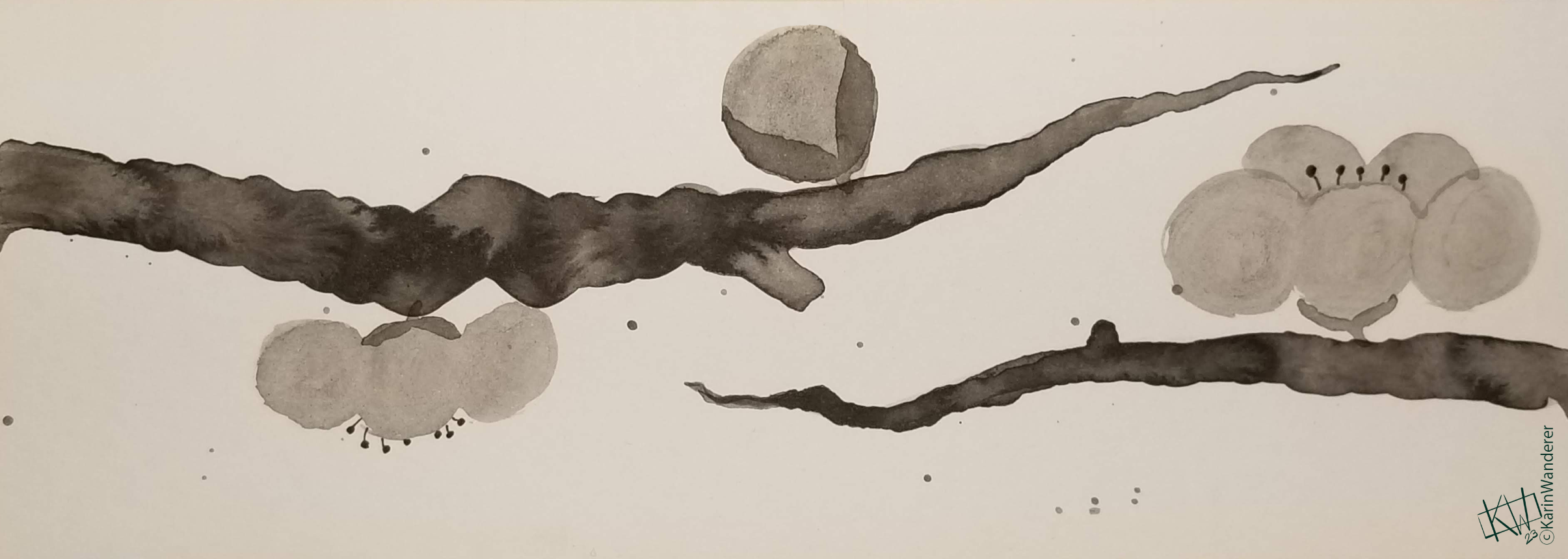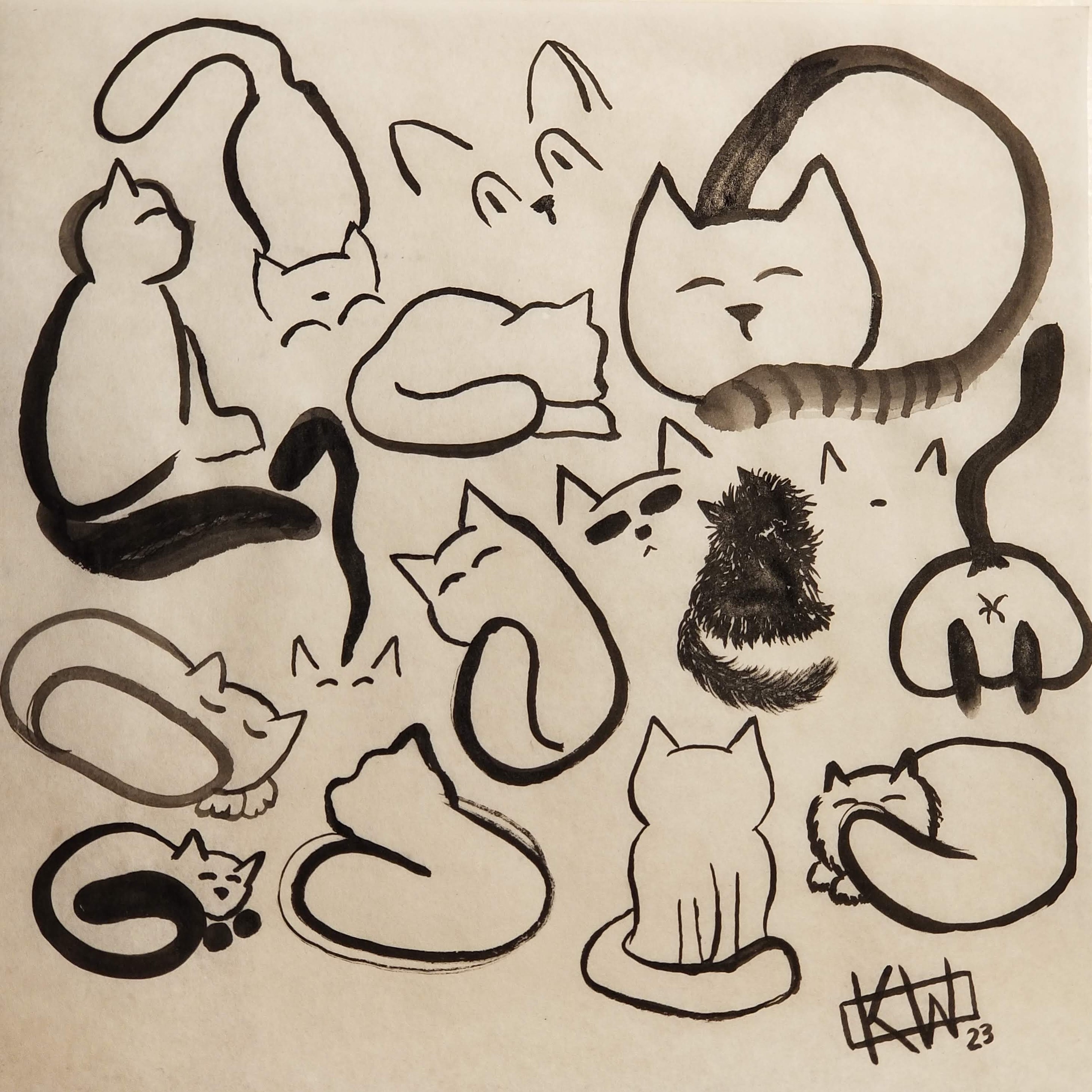The Contents of an Ink-bottle
Hello & Hello Again!
This is part of an ongoing series of articles about #ink. If you would like to know more about ink in general, read this. Sumi is my personal favorite ink. If you would like to know more about this traditional Japanese ink, read that. If you would like to know more about many different ways sumi is used in art, read on!
What is Sumi-e?
In Japanese, sumi means black ink & e means painting. It can be confusing to figure out exactly where the line is between “sumi-e” & “art someone made using sumi.” Some people don’t think there is a line at all; they use sumi-e as a collective term for all sumi-based art. Some insist that it is only sumi-e if it is painted using only ink, featuring only a very few traditional subjects (e.g.– mountains, bamboo), AND only painted on rice paper. Many people fall somewhere in the middle. Outside of the rigorous purists, a general description of sumi-e might read as follows: It can be just sumi, but some forms of sumi-e incorporate watercolor paint or colored inks. It is often but not always painted on rice paper.
 Sumi on watercolor paper
Sumi on watercolor paper
Ink Wash
Ink wash painting was brought to Japan by Zen Buddist monks. This is the type of sumi-e most people are familiar with: stylized landscapes rendered in greyscale created with diluted black ink. Have you seen Disney’s animated movie Mulan? The opening is an animated example of the ink wash style. (Note: As Mulan takes place in China, it is likely that the opening is not depicting sumi. It is more likely meant to be India ink, which was invented in China.) Some ink wash artists put an emphasis on minimalism, while others do not.
Sometimes the ink wash landscape is paired with writing such as poetry, a riddle, or philosophy. This is called shigajiku. The results can be quite striking! I kept getting distracted while writing this because I wanted to track down translations of practically every one I saw.
 Sumi & white ink on watercolor paper
Sumi & white ink on watercolor paper
Tattoos
Tebori tattoos are inked by hand using sumi. The resulting tattoo is a beautiful greeny- black. Beyond this point tattoos get so complicated so quickly that if you find this topic interesting you should really research it yourself. Have fun!
Oops
I meant to wrap up the sumi series with this article, but I have failed! Can I stop geeking out over pretty paintings & finish talking about sumi? Find out next week; same Karin time, same Karin channel!
Do you like this ink? What did you think? Let me know on Mastodon & Ko-Fi!
 Sumi on rice paper
Sumi on rice paper
Get my art on mugs & vinyl stickers in my Shop!
Donate to support my works & get cool perks on Ko-Fi
Join us for #ArtABCs, a year-long art challenge!
Find me
- All pictures posted are my own work.
- All reviews are my own unpaid & unsolicited opinions.